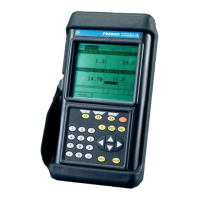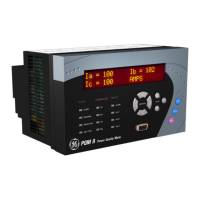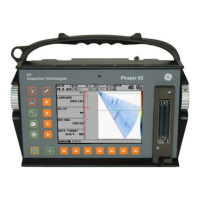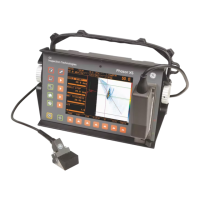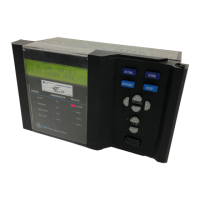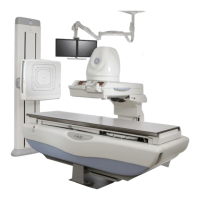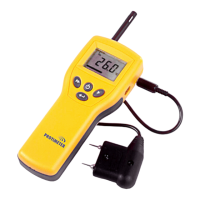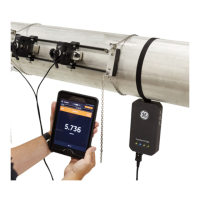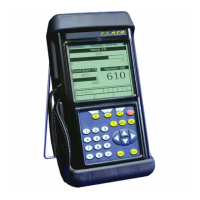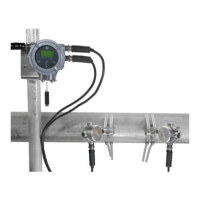GE Power Management PQM Power Quality Meter 2-13
2 INSTALLATION 2.2 ELECTRICAL
2
2.2.2 CONTROL POWER
The control power supplied to the PQM must match the installed power supply. If the applied
voltage does not match, damage to the unit may occur. Check the product identification to
verify the control voltage matches the intended application.
A universal AC/DC power supply is standard on the PQM. It covers the range 90 to 300 V DC and 70 to 265 V
AC at 50/60 Hz. It is not necessary to adjust the PQM if the control voltage is within this range. A low voltage
power supply is available as an option. It covers the range 20 to 60 V DC and 24 to 48 V AC at 50/60 Hz. Verify
from the product identification label that the control voltage matches the intended application. Connect the con-
trol voltage input to a stable source for reliable operation. A 2.5 A HRC fuse is accessible from the back of the
PQM via the fuse access door. Consult the factory for replacement fuses, if required. Using #12 gauge wire or
ground braid, connect Terminals 5 and 6 to a solid system ground, typically a copper bus in the switchgear. The
PQM incorporates extensive filtering and transient protection to ensure reliable operation under harsh indus-
trial operating environments. Transient energy must be conducted back to the source through Filter Ground
Terminal 5. The Filter Ground Terminal (5) is separated from the Safety Ground Terminal (6) to allow dielectric
testing of switchgear with the PQM wired up. Filter Ground Terminal connections must be removed during
dielectric testing.
When properly installed, the PQM meets the interference immunity requirements of IEC 801 and ANSI
C37.90.1.
2.2.3 VT INPUTS
The PQM accepts input voltages from 0 to 600 V AC between the voltage inputs (V
1
, V
2
, V
3
) and voltage com-
mon (V
n
). These inputs can be directly connected or supplied through external VTs. If voltages greater than
600 V AC are to be measured, external VTs are required. When measuring line-to-line quantities using inputs
V
1
, V
2
, and V
3
, ensure that the voltage common input V
n
is grounded. This input is used as a reference for
measuring the voltage inputs.
All connections to the PQM voltage inputs should be connected using HRC fuses rated at 2
Amps to ensure adequate interrupting capacity.
2.2.4 CT INPUTS
Current transformer secondaries of 1 A or 5 A can be used with the PQM for phase and neutral sensing. Each
current input has 3 terminals: 5 A input, 1 A input, and common. Select either the 1 A or 5 A terminal and com-
mon to match the phase CT secondary. Correct polarity as indicated in the wiring diagrams is essential for cor-
rect measurement of all power quantities.
The CTs selected should be capable of supplying the required current to the total secondary load, including the
PQM burden of 0.1 VA at rated secondary current and the connection wiring burden.
All PQM internal calculations are based on information measured at the CT and VT inputs. The accu-
racy specified in this manual assumes no error contribution from the external CTs and VTs. To ensure
the greatest accuracy, Instrument class CTs and VTs are recommended.
CAUTION
CAUTION
NOTE

